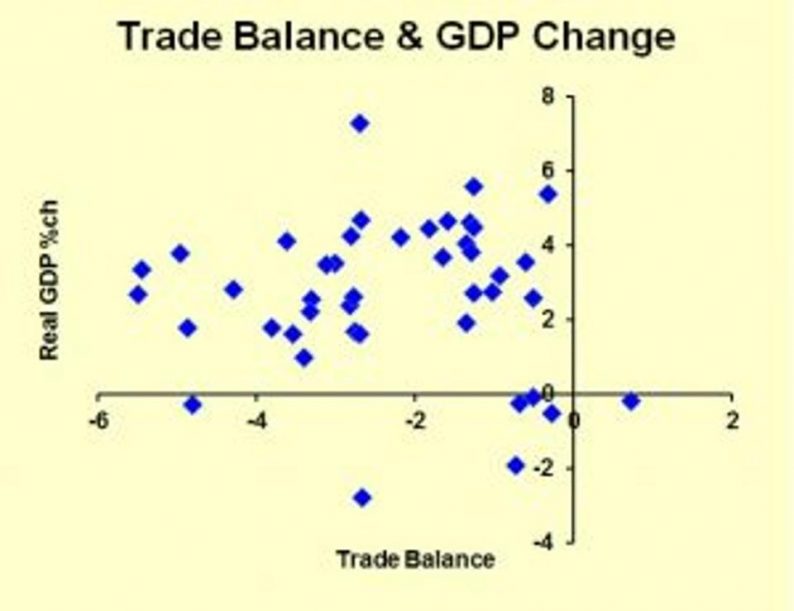The foreign trade balance dropped in the latest monthly report, meaning… absolutely nothing. I have been forecasting the economy since 1980 and I cannot recall a time when knowing the trade balance helped me predict any part of the future. It’s time to ignore it.
Back before 1973, during the Bretton Woods era, the trade deficit did matter. (The trade balance is the total value of exports minus the value of imports; it’s described as a deficit when imports exceed exports, as they do now, or as a surplus when exports exceed imports.) To maintain fixed exchange rates, a country could not run a large and persistent trade deficit, because it would lose international reserves, in our case, gold. At some point the Treasury could run out of gold, so something had to change. But we left that system in 1971. Since then, there’s no sign of problems from a large trade deficit.

Each marker shows one year the trade balance as a % of GDP, and the change in GDP.
The correlation between the trade balance and economic growth is a very tiny negative number, not significant, and certainly not telling us that reducing our trade deficit will boost the economy.
Confusion comes from how we collect statistics. Presidential advisor Peter Navarro writes, “When a country runs a trade deficit by importing more than it exports, this subtracts from growth.” The point is confusing because of how we collect statistics. Gross domestic product is calculated:
So at appears that imports subtract from GDP, but that imports subtract from GDP, but that’s only because some imports were already counted in the first three categories of spending.
Here’s another way to calculate GDP:













Leave A Comment